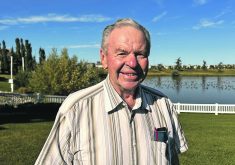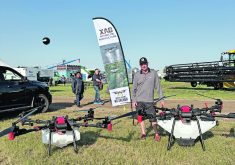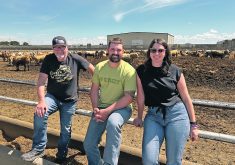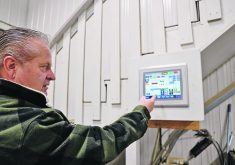Farmers advised to set aside money for insurance and investment needs off the farm long before discussing retirement
When it comes to planning for their retirement, farmers rarely go to financial advisers asking for a plan.
At least, that what Colin Sabourin, a financial planner with Hemmett Anseeuw and Associates of Winnipeg, sees when he works with farmers.
Sabourin sees a trend of farmers whose retirement plans are selling off their assets when they’re ready to retire, bringing him the money, and then asking the question about what they should do with it.
“They’re not really interested in taking money off the farm to save on the side and they see that their biggest bang for their buck will be reinvesting in their business.”
Read Also

More factors affecting winter weather
When you combine a weak La Niña, early Siberian snow, and a warm northern Pacific, it’s easy to see why long-range winter forecasting is so complex.
Especially for young farmers, they should be looking at ways to both diversify their business investments as well as saving for the future, he says, and they should start early.
Related stories in this issue:
- Know what you want to get from retirement
- Retirement planning must start now
- Income can continue after retirement
- Get a handle on expense and income streams
For the most part, Sabourin doesn’t blame farmers for getting out fast, either because of health problems or tough income years.
“If they’re not all in, then they’re not doing a good job so that’s why it’s usually, ‘bang, I’m done.’ I get the phone calls, ‘Colin, I’ve sold,’ when I should be getting the phone call, ‘Colin, I’m thinking of selling.’ I never get that phone call.”
Once a farmer has sold their operation, there is nothing left to do but personally invest the revenue. All the farm investment opportunities are gone, he says, which could mean hundreds of thousands of dollars in taxes that the farmer wouldn’t have had to pay with better planning.
When Sabourin asks the questions of investing for retirement, his standard piece of advice for farmers is to set aside money for insurance and investment needs off the farm long before retirement is discussed. Don’t cheap out, he says.
“You’ll spend 15 bucks an acre on chemical or you’ll pay 100 bucks an acre for rent. Spend $10 per acre on your tax planning and your financial planning and you’ll have a great plan.”
Ray Riel with Advice Only Financial Group usually advises his clients to put around one to two percent of their income into a separate pool that is accessible for future needs.
If farmers want to save money outside the farm, a pertinent question farmers should be asking is where, he says.
Tax-free savings accounts should be the first saving strategy, says Sabourin. Once a farmer has maxed out his contributions, he will look for other investment options, but few have the benefits that TFSAs do, says Sabourin.
An investment into a registered retirement savings plan depends on whether the operation is incorporated and how much personal income a farmer is receiving, says Sabourin.
“Most farms I work with are a corporation,” he says. “Therefore they control how much personal income they take out every year, which therefore means that RRSPs generally don’t make any sense because they’re not making a high personal income.”
Once a farmer has the strategies, saving money can be difficult with personal and farm debts to look after. But even hyper-successful farmers have these challenges, says Riel, because they all need strategies that sell off their assets in a tax-friendly way.
Successful years have meant strong investments back into the farm, but what does that mean for their CPP and OAS eligibility?
Using CPP as an investment and income strategy is not a quick fix, says Riel, and farmers need more than five years to get that to a point of a strong return.
“In order to build up CPP, you have to show taxable personal income that is close to the average around $40,000 to $50,000 a year and that’s sometimes a challenge in some farming operations.”
Chris Veilleux with Prairie Wealth Planning Consultants Ltd. out of Brandon says he sees a lot of success in clients who keep good records of their spending and saving habits.
“I’ve given people what I call my fridge test, which is just take a piece of paper, tape it on the fridge and for one month they write down every single expense that goes out of their household … and then we come back and sit down and have a look at that.”
The test forces people to acknowledge their spending habits and what impact that has on their savings, he says.
Communication is crucial for a successful retirement, especially communicating with family when succession is part of the plan.
Veilleux sees many farm financial problems as the result of broken communication between family members, which can be avoided with the right team in place discussing what needs to be done and what strategies will work for everyone involved.















